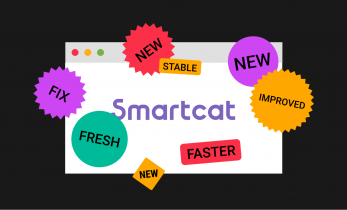Greater than 4 minutes, my friend!
3 Inspiring Speeches at TENV-Congress 2016 Three Inspiring Speeches at the Interpreting - and Translating Congress 2016 in Hilversum in the Netherlands
You can also read this post in Português, Deutsch or Nederlands.
My first conference this year!
On the 11th and 12th of March I joined the “Tolk – en Vertaal Congres 2016” in Hilversum in the Netherlands. With more than 750 people registered, the conference was well attended and thematically very broad. It addressed pretty much everybody who works in the translation industry. Under the motto “Getting ahead together” interpreters, translators, students, translation agencies, language technology experts, training institutes and even the public service had gathered. The COA, the Dutch authority for receiving refugees, was also represented.
Henry Liu, President of the International Federation of Translators (FIT), gave the prelude with his inspiring keynote speech in front of a full audience. “What unites us? – Building a collaborative and sustainable translation profession” was a speech full of food for thought. How can we bridge the gap between users, funders and translators and make the translation process transparent? Are we still translators or rather IT-professionals? What alternatives are there for the volume-based billing of translations? Nobody advertises with “Slow Translation”; you always see “Fast Translation”. Is there something like the “Fair Trade LSP”? The following comparison was amusing: Imagine the interpreter only gets paid 50% for a sentence he had previously interpreted for this customer. He refers to Akerlof’s lemons problem and talks about the discrepancy between translation quality and customer specification: The quality should fulfil the customers’ expectations, no more and no less, so you can agree on an adequate price.
On quality and responsibility Henry Liu reminded us of Toyota and the most expensive recall of all time, where translator and whistleblower Betsy Benjamin played an important role. Liu found the translator’s situation in volunteering to be problematic. All participants would get outside recognition in one form or another, except for volunteer translators. Is intrinsic motivation enough, or do we need to improve collaboration?
Technology as a positive development, but also as a counterpoint to linguistic diversity was another issue. “If everyone thinks alike, everyone stops thinking.” Should we dematerialize translation, rather than dehumanize it?
Jaap van der Meer from TAUS presented us with an overview of the development of language technologies in general and machine translation in particular. At the same time as Jaap van der Meer’s speech, Bert Esselink in the other room was giving a talk on “Assuring quality when clients keep demanding more quality at the same rates”. This decision was a difficult one for me. Esselink’s classic “A Practical Guide To Localization” is also on my bookshelf and I’d liked to hear him too. But since my focus at the moment is on machine translation, at 11:45 I was sitting in the theatre, eager to hear Jaap van der Meer talk about the beginnings of the language technology industry in the 1980s.
A video of the first text writer reminded us how fast the development in information technology had been. With 100 pages on 20 floppy disks back then, Jaap was able to increase his productivity by 100%! Also in the 80s Systran, one of the oldest companies in machine translation and today’s market leader in this area in internet, was introduced in the local Paris internet “Minitel”. As for progress in the 90s, Lernout & Hauspie, now Nuance (Dragon Naturally Speaking) was mentioned for its developments in speech recognition.
In the long run, according to Jaap’s experience, development of new technologies passes certain phases: 1. Height of expectations, 2. Depths of disillusion, 3. Plateau. The 2000s were the decade of TMs. TAUS began gathering TM data in the Cloud. The idea of the project was to build a human language genome analogous to the Human Genome Project. The disillusion had already begun, says Jaap van der Meer. In 2010 more words had been translated by machines than by humans. Translation has become an application. Translation engines exist as APIs, paid for by the sharing of data. (As a little sideswipe Jaap van der Meer mentions Slate Desktop here, the Cloud-independent exception, but more on that in the next post.) In the future: TAUS invites you to discuss the blog “The future does not need Translators“. Everyone can voice his opinion. Jaap frankly shares his insights of a long career in language technology: Keep calm and don´t get overly excited – technology is made by humans. He then returns to the impossibility of protecting data in the cloud.
And one last bit of advice for us: START MEASURING!
An apt comparison: Translation is like toilet paper – no one thinks about it until you need it.
Lori Thicke from Translators Without Borders opened the second day of the conference. Lori had always wanted to volunteer, but simply never got to it (like so many of us) until her translation agency got an assignment from Doctors Without Borders in 1993. Her chance had finally come and she offered the translation pro bono. Lori did her own research and realized the huge demand for translations for humanitarian aid.
An important issue in her speech was about mother tongues. If we only communicate in major European languages, we will only talk to ourselves. Lori talked about crisis situations, where critical information was delayed because it was not provided in the regional language. She explained the major advantage that people have when they can study in their first or second mother tongue, a situation many people in Europe totally take for granted during their education. For example, Norwegian, a language with 5 million speakers, has 450,000 Wikipedia pages full of free information. Hausa, with 50 million speakers, has only 1,300 pages listed in Wikipedia. Lori also commented on the problematic nature of volunteer work for translators, who remain invisible and unrecognized. And what is the situation of translators in the most required language combinations for humanitarian aid?
The conference offered many more interesting workshops and lectures. As a technical translator, my main focus was technology. I watched the Cat-Fight, joined the Lilt-Workshop, learned that you can train Dragon with target TMX, learned that Wordbee allows as many target language columns as you like, learned about the SCATE-project, was able to ask my questions about Matecat, made interesting contacts and met a lot of nice colleagues.
Next year I’ll be back for sure!
Uta Schulz – www.usermanualtranslation.com
PS: This text was LILTed from German (500 words/h + proofreading).





Great review Uta!
I was there too (on Friday) and it was really interesting, although the coverage for freelance translators could have been somewhat better.
I was also involved in writing press releases and learned from the organization that it probably will be held again bi-yearly.
Thank you, Pieter. Well, we are lucky: in 2017 GALA will be held in Amsterdam 🙂